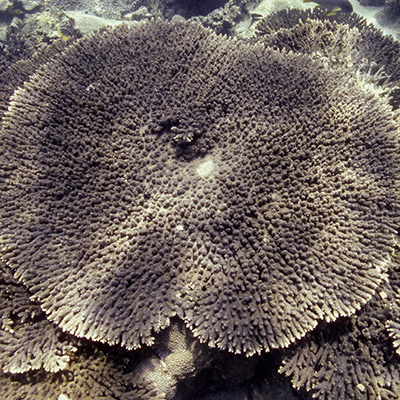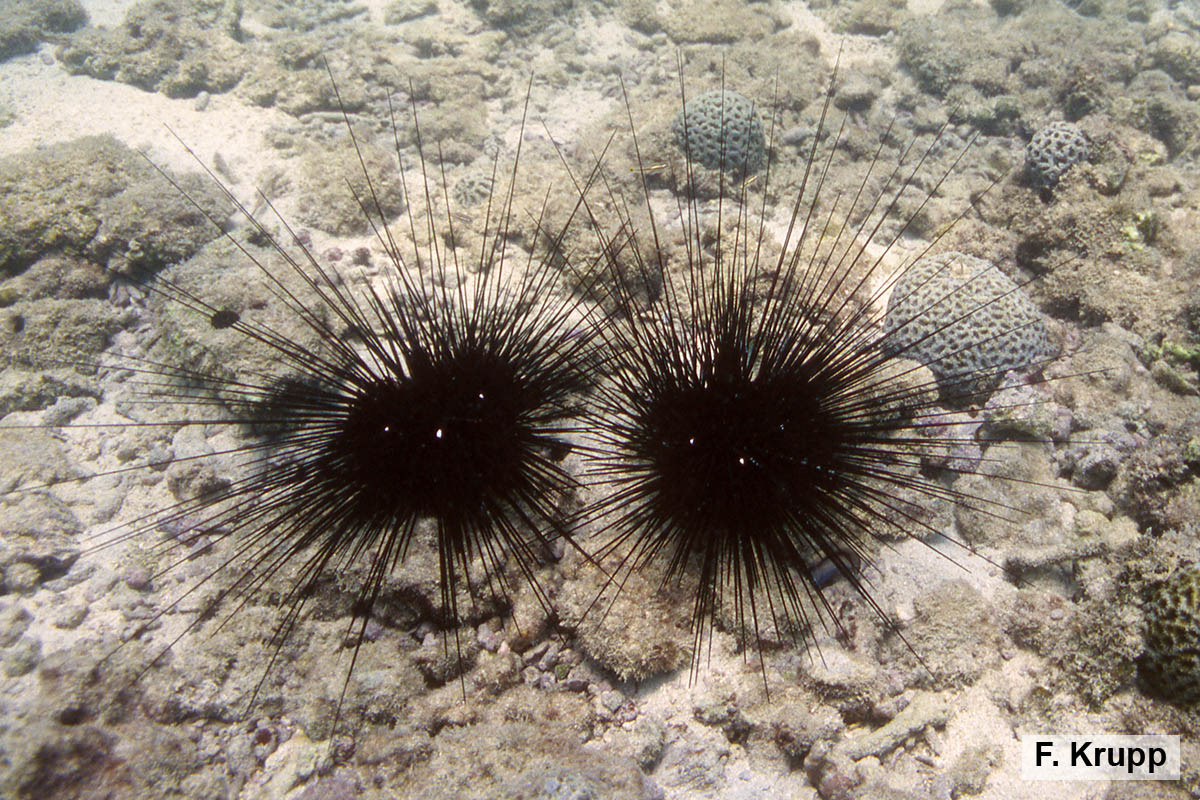Name: Diadema setosum
Common name: Long-spined Sea Urchin, Porcupine Sea Urchin
Local name:
Scientific name: Diadema setosum
Classification: Class: sea urchins; order: diadematoids (Diadematoida); family: diadematids (Diadematidae)
Size: Adult individuals have a mean test size of 70 mm (max. 84 mm) in diameter and 40 mm (max. 48 mm) in height; their weight averages 35 80 g.
Habitat:
The Long-spined Sea Urchin lives around reefs and shallow rocky habitats with coral growth, but also on sand flats and in seagrass beds, mostly at 1 6 m depth. It hides in crevices and under overhangs during the strong sunlight of the day and leaves its hideout at low light. It feeds as a scavenger and prolific grazer on algae that grow on dead corals or rubble, ingesting loose organic material and scraping algal films off hard surfaces. The needle-like spines contain a mild venom that can cause acute pain to unwary humans who touch them, but as the spine tips break off easily after penetrating the skin they leave fragments that are difficult to remove. The spines also provide shelter for a variety of symbiotic organisms, such as one shrimp species that is perfectly camouflaged between them by its black-and-white longitudinal stripes.
Distribution:
The species is widely distributed, and one of the most common seashore sea urchins, throughout the tropical Indo-Pacific region, where it occurs from the east coast of Africa, the Red Sea and the Arabian Gulf eastward to Japan and Australia.
Conservation status:
Diadema setosum has not yet been assessed for the IUCN Red List of Threatened Species.
Description:
Being a member of the regular sea urchins, Diadema setosum has an almost spherical, just slightly apically depressed body that lacks arms, but still shows the five-rayed (pentameral) radial symmetry of all echinoderms. A rigid endoskeleton known as the test, made up of tightly interlocking plates, encases all internal organs. The underside of the body is referred to as the oral side, because it contains the mouth, whereas the opposite aboral side is the upward-facing surface, where the anus is located. The calcareous plates that make up the test are arranged in ten double bands extending meridional from the oral to the aboral pole (like skin slices of an orange). In five of these bands, the ambulacra, each plate is perforated by several pairs of podial pores, through which the flexible tube feet protrude to the exterior; alternating with these are five interambulacral zones that have unperforated plates. Tube feet are hydraulically controlled appendages of the fluid-filled canals that form the water vascular system inside the test, functioning in locomotion and respiration. Many of them end in wide suckers that can move or grip objects and hold the animal firmly to hard substrate. The long, movable spines iconic of a sea urchin’s appearance cover most of the body surface. They are articulated to tubercles arranged in rows on the test and can be pointed in any direction atop the ball-and-socket joints, but also fixed in position so rigidly that they break off rather than move. In Diadema setosum they occur in two types of distinctly unequal shape and size, the primary ones being hollow and needle-like and extremely long, as reflected in the common name. The mouth is equipped with five teeth operated by a complex system of plates and muscles called Aristotle’s lantern. Coloration of the thin skin covering the spines is usually black, sometimes brown-banded, but some or all of them can be gray or white. Distinctive of the species are a bright orange ring around the anus, five white spots on the interambulacra just above the periphery of the test and a series of bluish spots arranged in lines.








